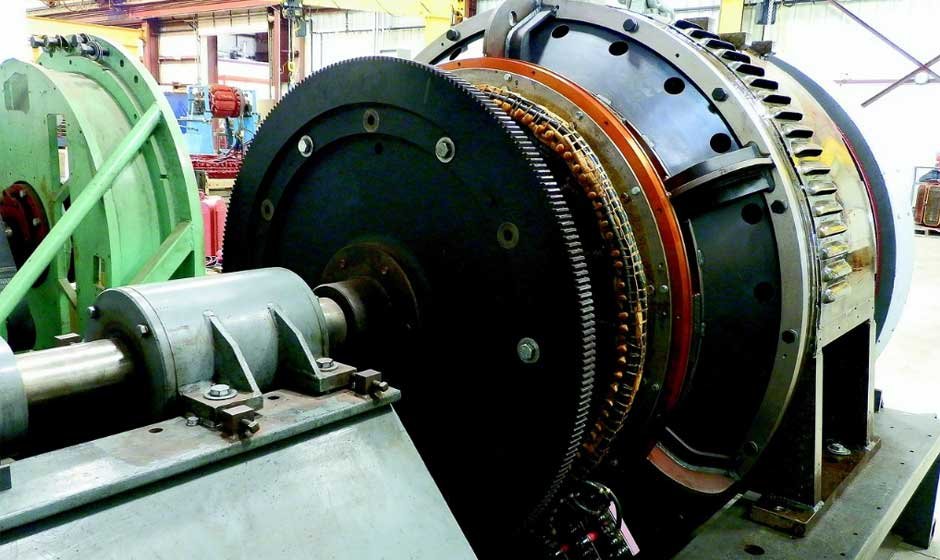Selecting appropriate power equipment creates significant effects on operational efficiency as well as long-term reliability and cost management. The selection of suitable tools allows uninterrupted operations in industrial, commercial, and residential applications while maximizing performance. Buyers who understand essential purchasing factors for power equipment can make choices that match their particular requirements and financial plans.
Assessing Power Requirements
Businesses need to establish their power output requirements prior to equipment acquisition. If machinery lacks sufficient power it won’t fulfill operational needs but equipment that exceeds power requirements leads to avoidable costs. Assessment of existing power demands and future requirements allows equipment to manage peak loads while maintaining efficient performance. Examining supplier websites reveals important information about mobile diesel generators, particularly their different power output configurations, and available customization features. Businesses needing reliable backup power should investigate top-tier backup generator models that fulfill their specific power needs.
Reliable equipment investments provide uninterrupted performance during power shortages or remote operations. A comprehensive knowledge of surge wattage, continuous power ratings, and load capacity enables buyers to choose equipment that matches their specific needs. Correct evaluations eliminate operational problems and generate sustained financial benefits.
Fuel Efficiency and Operating Costs
The total cost of ownership is greatly influenced by operational expenses. The use of fuel-efficient equipment lowers long-term operational expenses while delivering high-performance levels. The assessment of power equipment demands analysis of both fuel consumption levels and efficiency ratings. Equipment that includes energy-efficient features reduces waste while enhancing operational duration.
Specific models feature innovative load management systems that regulate power delivery according to demand needs to lower fuel consumption. Hybrid power solutions merge renewable energy sources with conventional fuels to provide economical alternative options—efficiency benefits from consistent maintenance practices, including fuel system inspections and filter replacements. Achieving cost-effectiveness in investments requires knowledge of how fuel consumption relates to maintenance expenses and performance standards.
Durability and Build Quality
Because power equipment must withstand demanding conditions, durability is a fundamental factor to consider. Power equipment built with premium materials and strong construction methods operates reliably for extended periods with minimal downtime. Investments in established brands offer businesses consistent, dependable performance across various operating environments because these brands have proven their success over time.
Power equipment maintains its durability with weather-resistant enclosures and corrosion-resistant components, while reinforced frames provide additional strength. Buyers achieve long-term peace of mind by evaluating warranty coverage and manufacturer support services. Research-based verification of specific model durability comes from industry reviews and customer testimonials. High-standard construction of equipment helps avoid unexpected breakdowns while preventing costly repair expenses.
Portability and Mobility
Power equipment users who need equipment across multiple locations must prioritize mobility in their equipment choice. Compact generators with durable wheels enable flexible usage across different on-site applications. Trailer-mounted power equipment enables straightforward transit between various job sites for large operations. The combination of compact generators with inverter units and lightweight power tools delivers both convenience and superior performance.
The choice of portable equipment requires evaluation of weight alongside handle design and setup ease. Businesses that move equipment regularly should invest in models with fast deployment capabilities to reduce operational downtime. Optimal efficiency across different workspaces is achieved by selecting equipment with an appropriate mobility and power capacity mix.
Noise Levels and Environmental Impact
Work environments experience disruptions from excessive noise pollution, which also results in breaches of regulatory standards. Residential areas, healthcare facilities, and construction sites need low-noise power equipment whenever controlling noise levels becomes a priority. Manufacturers provide models with improved muffler systems and noise-reduction enclosures to lower sound output during operation.
Workplace safety regulations require silent generators because they deliver strong performance while producing little noise. Environmentally friendly power equipment combines clean energy solutions to lower carbon footprints—systems powered by solar energy and hybrid engines and motors designed for efficiency support sustainable operation practices. When selecting equipment, buyers must evaluate emissions ratings and environmental compliance standards.
Technology and Smart Features
Using advanced technology in modern power equipment results in greater efficiency and improved operational simplicity. Through digital control panels, users gain real-time data, while automated load management and remote monitoring features offer enhanced operational control. Users can remotely track fuel consumption and battery status through mobile apps connected to smart generators and power tools. The automatic start-stop functionality helps save energy while minimizing unnecessary component wear. Technologically advanced equipment brings better user experiences while delivering precise control over power management. Operators must review feature lists and select models matching their specific operational requirements.
Compliance with Safety Regulations
Safety requirements should be the top priority when investing in power equipment. Following established industry standards and government regulations prevents accidents and legal troubles. Power equipment with OSHA, UL, and CE certifications meets strict safety requirements. Power equipment safety depends on features such as overload protection and automatic shutdown systems that prevent dangerous conditions and emergency stop capabilities. Power equipment safety standards rise significantly when proper grounding and insulated wiring are combined with circuit breakers. Users must adhere to best practices, such as ensuring adequate ventilation for fuel-powered equipment and performing regular safety inspections. Buying certified equipment helps lower workplace risks while maintaining legal compliance standards.
Total Cost of Ownership and Return on Investment
By evaluating the entire cost of ownership apart from the purchase price buyers can decide on purchases that are financially advantageous. Fuel efficiency, maintenance expenses, and durability determine the true value of power equipment. Investing more money upfront for equipment is wise when it results in reduced operating expenses and prolonged usability. Evaluating various models, warranty details, and performance metrics over time reveals optimal investment choices. Companies needing uninterrupted power operations must evaluate their financing choices and equipment leasing programs to optimize cost management. Evaluating potential savings from fuel efficiency and reduced downtime guarantees a high return on investment.

The investment in power equipment requires a detailed assessment of multiple factors such as power output efficiency together with durability and safety features. Through understanding important aspects buyers can select both reliable and cost-effective equipment that meets their operational needs. Through making educated choices, both industrial and personal applications achieve lasting benefits in performance and financial savings.










